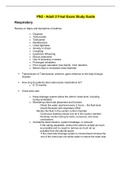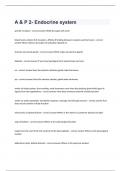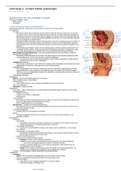Exam (elaborations)
LEV3701 EXAM SUMMARY 2022/2023
- Course
- LEV3701 - Law Of Evidence
- Institution
- University Of South Africa
LEV3701 EXAM SUMMARY 2022/2023 1 Study Unit 1 – Overview State whether the following statements are true or false: (1) The Law of Evidence is the name of the field of law that you are currently studying. False (with capitals it refers to the course name) (2) When it is said that ‘‘the ...
[Show more]












